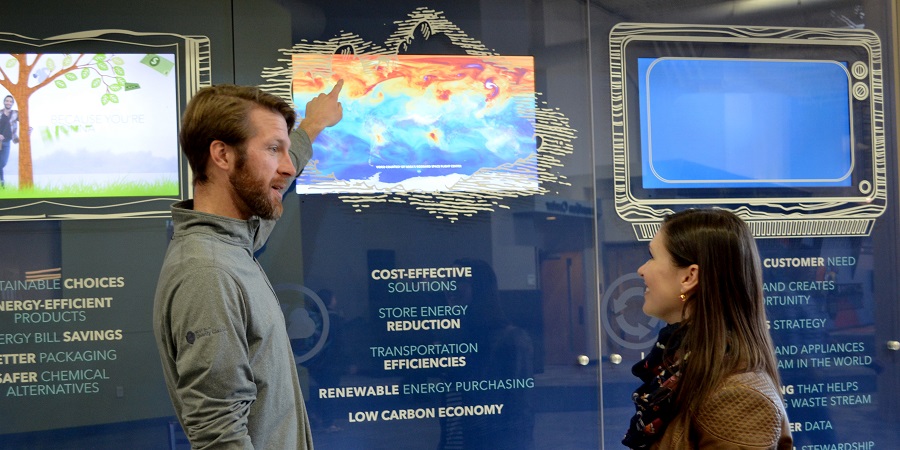February was hot, hot, hot. In fact, it was the hottest recorded month in history, according to newly released data. That news follows NASA’s announcement that 2015 was the hottest year ever.
Why does this matter to Best Buy? To start, rising temps lead to rising energy costs. And as temperatures rise, there’s more extreme weather, such as floods, droughts and hurricanes. These events affect our employees, customers and the environment. In 2015, extreme weather impacted nearly half of our locations – forcing closures and, in some cases, damaging merchandise.
It’s not just weather around our facilities that affects our business. In 2011 for example, a devastating flood in Thailand caused a world-wide shortage of hard drives, disrupting the entire computer supply chain for several months and leading to an increased cost of goods.
At Best Buy, we are committed to combatting climate change.
Since 2009, we’ve made great progress. We exceeded our 20 percent carbon reduction target in 2014. We have since set a new science-based goal to reduce our emissions 45 percent by 2020. A new aspect of our goal will be to incorporate renewable energy sources, including wind and solar to offset our electricity usage.
We also provide sustainable solutions for our customers such as ENERGY STAR® certified products. Additionally, we are selling more Connected Home products that help our customers to save energy and reduce water usage.
Sustainability is important to us at Best Buy. By reducing our carbon emissions and by providing sustainable products for our customers, we will continue our leadership role in positively impacting our world.
For more sustainability news, visit our website and follow us on Twitter: @BestBuyCSR.


